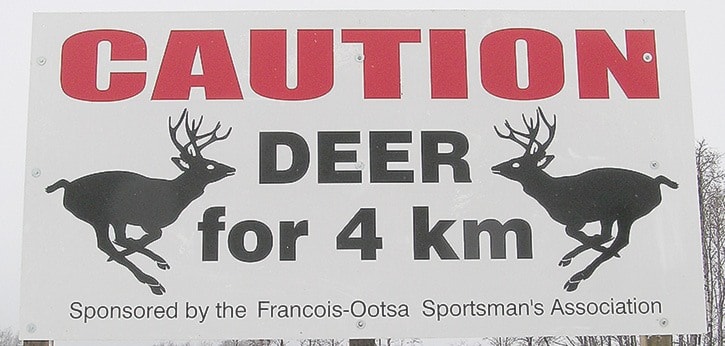Drivers are advised to watch out for moose, deer, and other animals on local highways, particularly on Hwy. 16 from Prince George to Prince Rupert.
Deer collisions are common in October and November, and moose collisions occur most often in December and January. There can be one or two wildlife collisions per day during these months.
“Although a collision with wildlife can happen at any place and at any time, along Highway 16, there is a sharp spike in wildlife vehicle collisions that begins in October,” says Barb Waters, Regional Manager, B.C. Conservation Foundation. “The critical times to watch for wildlife on the roads are between 5:00 to 8:00 am and 5:00 to 7:00 pm.”
Community specific information from ICBC shows that along the Highway 16 corridor, there are over 750 wildlife collisions every year. Annually in northern BC, about three people are killed and over 140 people are injured in wildlife collisions.
The Wildlife Collision Prevention Program offers the following hints for the highway.
• Both drivers and passengers must actively watch for wildlife on the road and roadside area.
• People think of the road as a dangerous place, but, in fact, animals are often attracted to the road and roadside area. Drive expecting to see wildlife.
• During the rutting season animals are frequently on the move, and vehicles might be the last thing on their minds.
• Animals don’t think or perceive danger the same way that humans do. They may not recognize a vehicle as dangerous or a horn as a warning, or even if they do, they may not react safely.
• Animals are unpredictable in their behaviour and may bolt in front of a vehicle or cross and then immediately re-cross the road.
• Deer are often seen in groups, so if there is one animal there are usually more. The deer you are watching may not be the one that poses the threat; it may be the second or third deer following behind that causes the problem.
